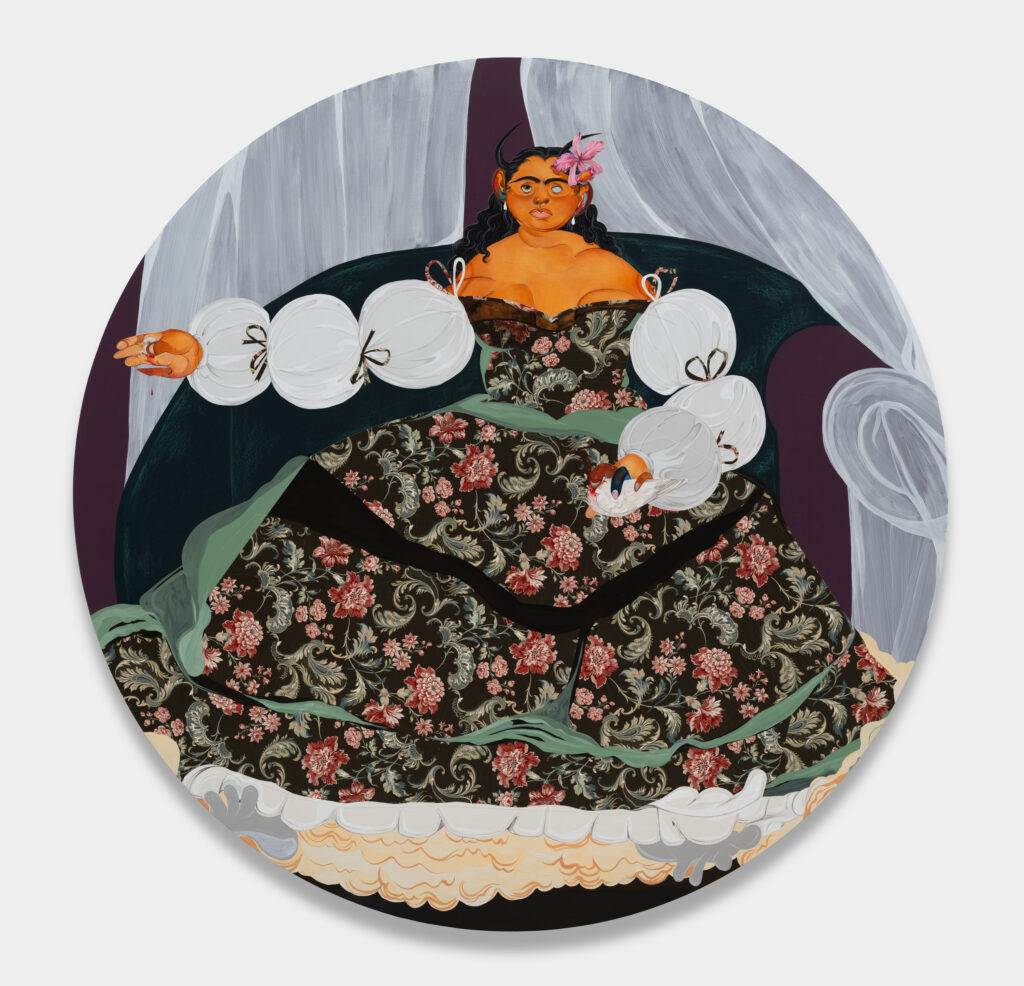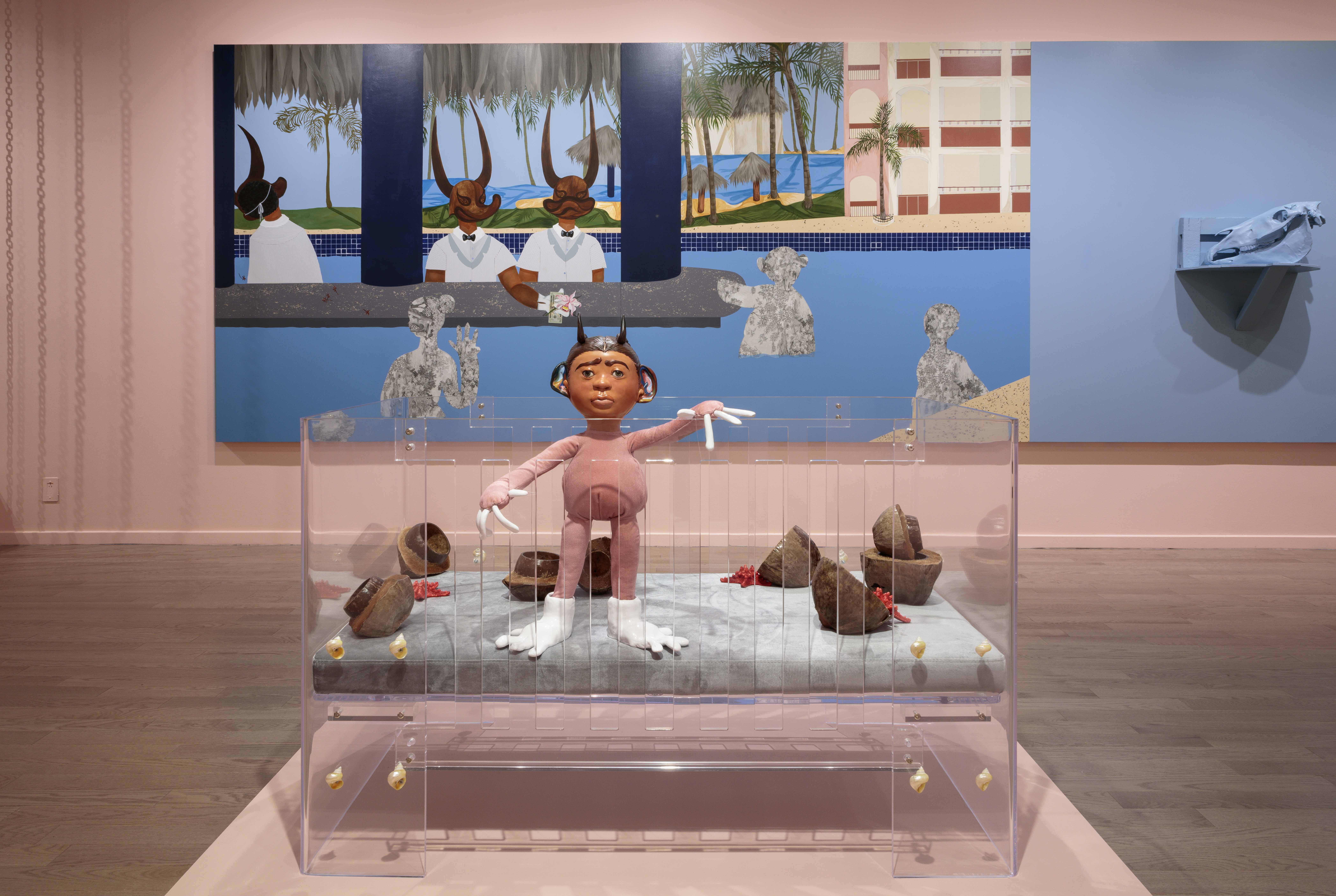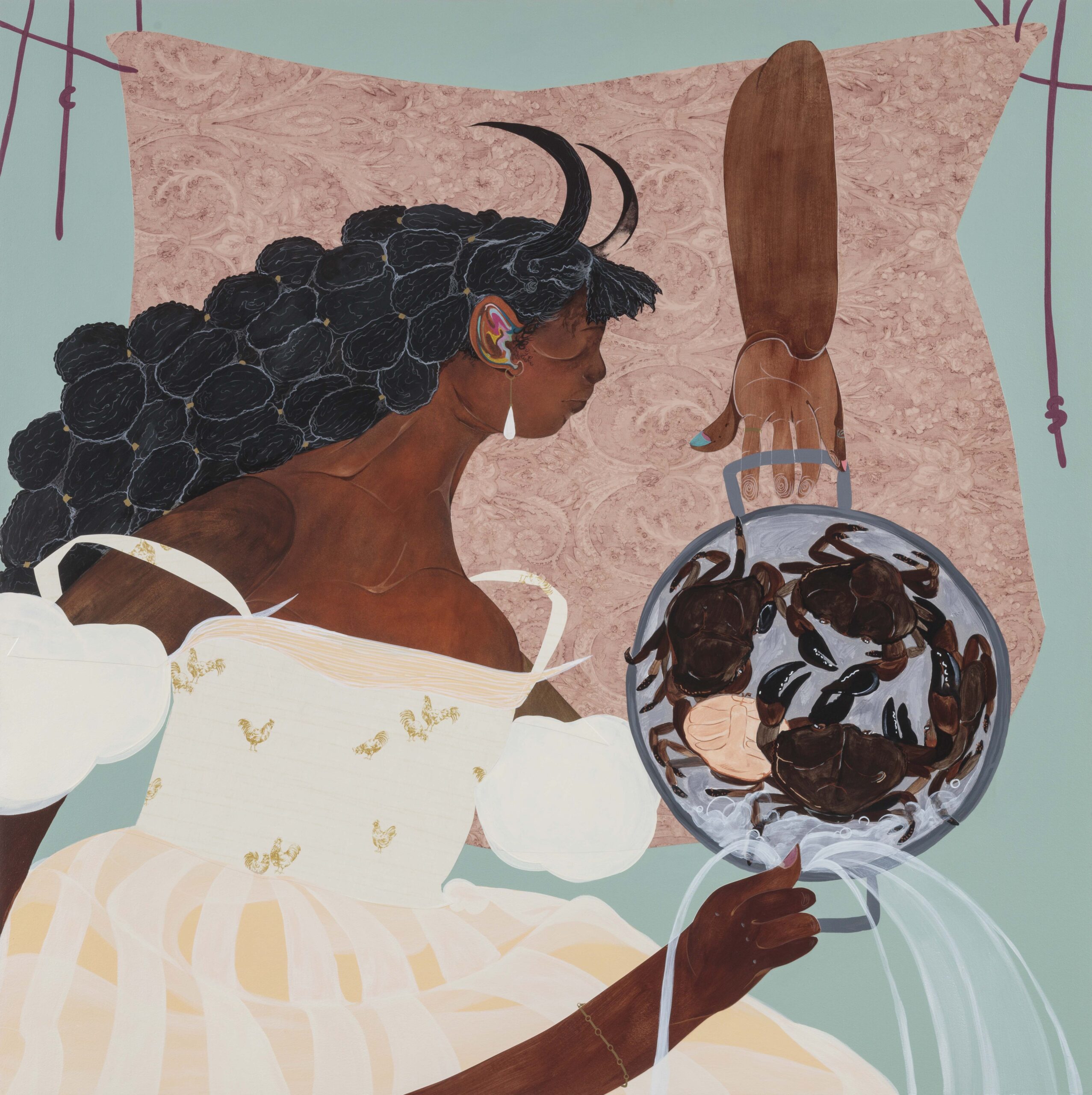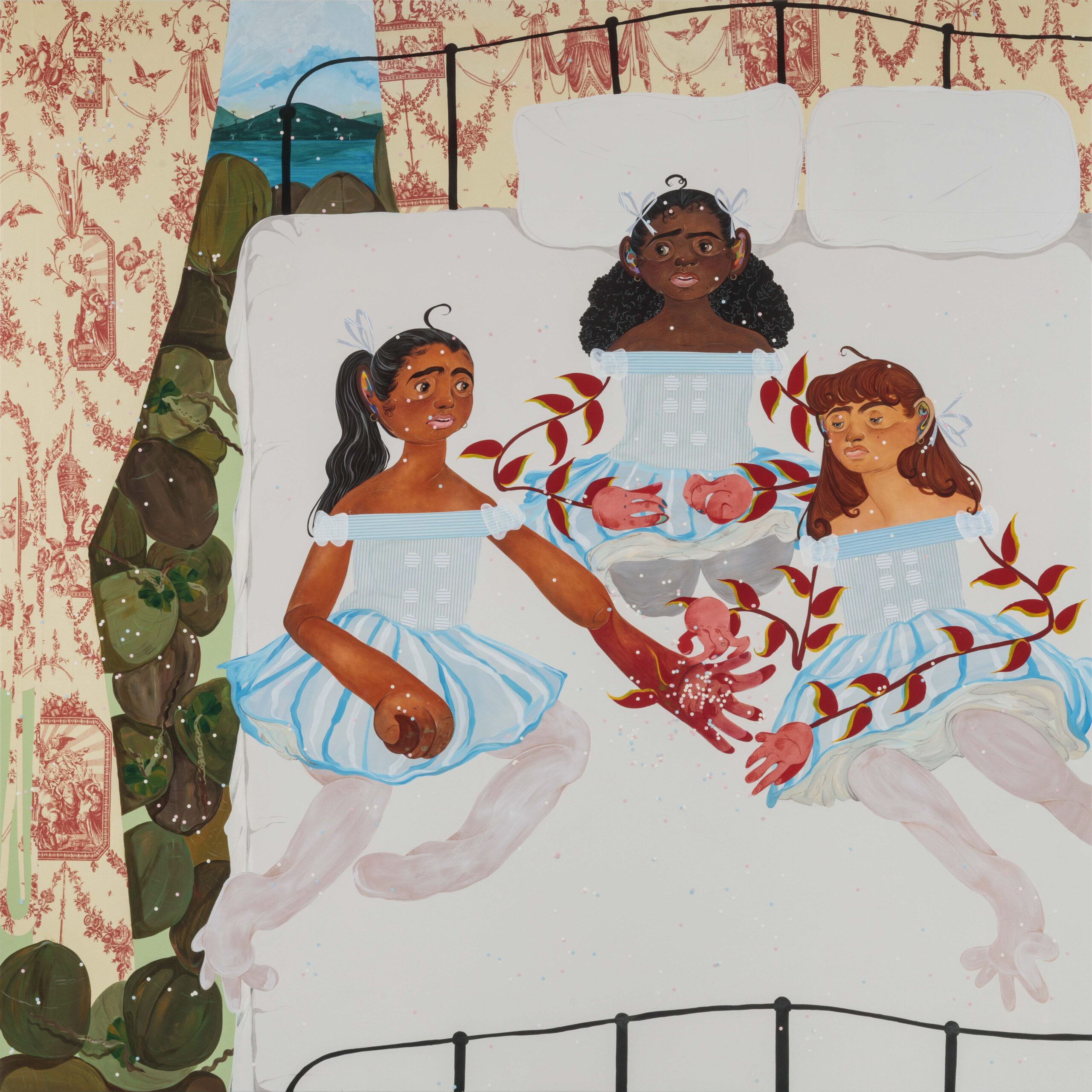
When Bony Ramirez moved to the United States from the Dominican Republic 10 years ago, he hoped to study art in college. Doing so while financially supporting his mother and younger brother, however, would have been impossible. Instead, Ramirez started a job as a construction worker, and he spent his day off each week creating colored-pencil drawings of figures inspired by European Mannerist paintings. Eventually, he began posting pictures of his work to social media—and, to his surprise, amassed a large following, especially during the pandemic. Ramirez now works full-time as an artist, combining traditional materials like acrylic paints, oil pastels, and colored pencils with ones evoking life in the Caribbean, such as floral-patterned wallpaper and seashells. He mounts the finished products on wood panels, and these mixed media pieces explore life, past and present, in the Dominican Republic through surrealism and mysticism.
Ramirez’s solo exhibition “Cattleya,” named for a genus of orchid native to the Caribbean, is now on display at the Newark Museum of Art, the first museum in the United States that Ramirez ever visited—“a full circle moment,” he says. Inspired by Martin Johnson Heade’s 1880 painting Cattleya Orchid with Two Hummingbirds in the museum’s collection, Ramirez’s exhibition explores the idea of orchids as “beautiful parasites.” While the flowers are treasured for their purple and white blooms, they also attach themselves to trees, leaching nutrients from their hosts. “I related that to the idea of colonial occupation—or how sometimes when people visit other countries, they don’t acknowledge the place that they’re in,” Ramirez explains. He hopes his works encourage viewers to understand the full diaspora of the Caribbean. “Caribbean contemporary art hasn’t had much of a place in art history yet,” he says. “I try to make sure that all elements of Caribbean life and culture are incorporated so that if you’re from there, you feel included, too.”





